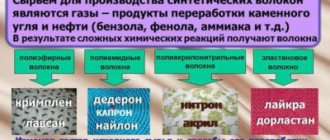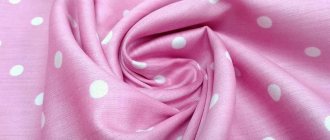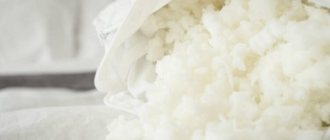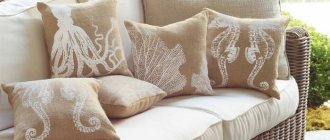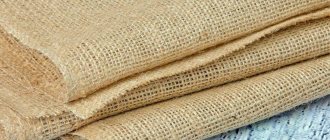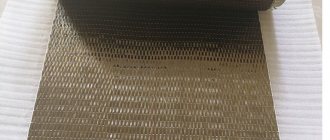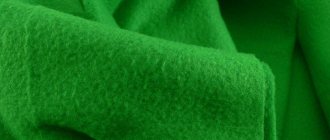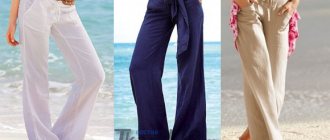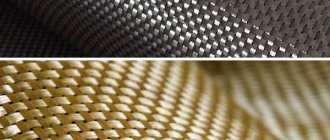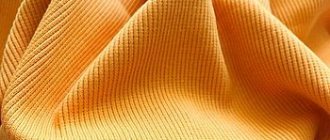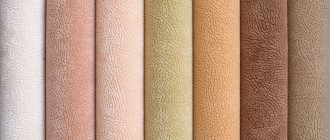History of the atlas
The material was created more than two thousand years ago by Chinese masters. For a long time they kept secret the method of producing this silk fabric. Gradually, neighboring countries began to take possession of the secret. But the shortage of silk did not allow mass production.
For many centuries, satin fabric was considered a privilege of the upper class. The palaces of monarchs, nobles and clergy were decorated with it.
Only in the twentieth century did the material become available to everyone, thanks to the discovery of synthetics, which managed to replace expensive and rare Chinese material.
Types of patterns on the atlas
Patterns on silk fabric differ in the method of application:
- Jacquard. The background fabric has a satin weave. The pattern on the fabric is formed by different colors of threads or a different weave.
- Printed. The selected design is applied to the atlas using special paint rollers.
- Embroidered. The design is embroidered on the finished satin fabric.
- Embossed. The pattern is extruded with a thermal roller.
The most popular types of patterns on silk fabric have been known since the 19th century:
- Khan cloth (“Khan silk”) is made of silk. A complex pattern with smooth color transitions, shimmering with all the colors of the rainbow, is woven from threads of different colors. The technology for making Khan satin and the fabric itself are called “ikat” in the West. The word is derived from the Indonesian word "mengikat". It is translated as “to bind”, “to unite”, “to entwine”. Valuable satin is used to sew national costumes of eastern peoples.
- The Pompadour fabric is named after the favorite of King Louis XV of France. It looks like brocade. A floral ornament is woven with gold or silver threads on a dark background.
- Atlas Maintenon immortalized the favorite of another French king, Louis XIV. Floral patterns are woven on a dark fabric background.
- The Trianon material owes its name to the French palaces built on the territory of the village of the same name. It is distinguished by the contrasting shades of the pattern with floral motifs. The ornament contains large leaves, clusters and bouquets of flowers.
You may also be interested in: Voile curtains - creating an “airy” design
Satin curtains with rich and luxurious patterns that decorated the chambers of French kings will add a special chic to the living room.
Variety of composition
Initially, the fabric was created from natural silk thread. Today such an atlas is considered the most expensive.
To save money and give the material greater elasticity and strength, natural or synthetic fibers are often added to silk:
- cotton;
- polyester;
- viscose;
- nylon;
- acetate.
Synthetic fibers can be used to create satin without using silk.
Satin - what kind of fabric is it?
Satin is a dense silk or semi-silk fabric obtained by double-sided weaving. It consists in the fact that most of the threads are released with the front side and cover the weft.
Different shades of satin fabric
Thanks to this, the standard satin on the outside is smooth and shiny, and on the inside – matte. Double-sided material is smooth on both sides, which is achieved by using two sets of threads.
Initially, satin was sewn from natural silk thread, but now other fibers are added to it - cotton, polyester, viscose, nylon, acetate. Thus, in the manufacture of the material, silk may not be used at all, which reduces its price, but also affects its characteristics.
Varieties of patterns
This fabric can be plain dyed or patterned.
The first option provides a plain, smooth structure.
In the second case, the following types of atlas are distinguished according to the method of execution of patterns:
- embroidered (the pattern is made by special machines on top of woven material);
- printed (paint is applied to the finished fabric);
- embossed (an engraved thermal roll is used);
- jacquard (natural method: new weaving is brought to the front side).
Variety of patterns
Modern types of satin are produced plain-dyed with a smooth, plain structure and patterned and jacquard.
The fabric is classified according to the dyeing method:
- Maintenon with a pattern in the form of an imprint on a plain canvas.
- Trianon, which stands out for its contrast: a light pattern on a dark field or vice versa.
- Pompadour with woven gold ornament on a dark background.
Depending on the method of applying the ornament, patterned satin can be:
- Printed, when dye is applied to the finished canvas using a printer or roller.
- Embroidered - its feature is the application of a pattern from threads on special machines.
- Jacquard satin, in which the front side is woven with threads to create a plain or colored pattern.
- Embossed - the design is applied to it by an engraved thermal roller using the extrusion method.
Types of atlas
- Satin is a natural fabric. Made from a combination of cotton and silk.
- Crepe is a double-sided soft shiny material, somewhat rough. When creating it, tightly twisted transverse threads are used.
- Duchess. It has a high thread density and is rigid.
- Atlas Dupont. It also has high density. It has a strong shine.
- Taffeta. Lightweight but dense material. It has a characteristic shimmer.
- Russian atlas. Made from raw silk with finely woven threads.
- Antique has a textured look. It is produced by alternating thick and thin sections with threads as weft.
- Stretch. Lycra is used to create this fabric. Therefore, it practically does not wrinkle and fits well to the figure.
- Crash is a shiny crinkled fabric.
How to care for things made of satin
Satin fabric is expensive and fancy, which means you need to take care of it carefully. These are the basic rules, adhering to which the thing will remain intact and attractive.
- Wash either by hand or on a delicate machine wash.
- Choose products for gentle washing. Maybe specifically for silk.
- Using powders with aggressive stain removers and chlorine can damage the surface of the fabric and ruin its color.
- It is better to squeeze it by hand, as the drum of the machine can tighten.
- Satin items should be washed separately from others, while fastening all accessories. This will help avoid damage to the fabric.
- Products should be dried vertically in a straightened form.
- Iron satin items using damp gauze and a not very hot iron.
- To prevent the item from becoming electrified, treat it with an antistatic agent.
Application area
The atlas is often used to create:
- festive and weekend wear (evening and wedding dresses, men's suits);
- children's and women's underwear, men's nightgowns;
- casual clothes (blouses, skirts);
- linings for coats, fur coats and raincoats;
- home textiles (bed linen, curtains and curtains);
- accessories and decorations (umbrellas, gloves, hats, ties, bows).
Curtain satin is placed in a separate category. It is highly durable.
Shoe satin is used when sewing pointe shoes.
Scope of application of the atlas
Elegant clothes are made from satin:
- evening dresses;
- costumes;
- ties;
- wedding dresses.
Satin lingerie is an indispensable attribute of romantic dates.
You can also sew casual clothes from satin - blouses, skirts, trousers. These clothes are worn to the office and to business meetings.
Curtain satin is used for sewing curtains. The matter is dense and does not transmit light. Satin curtains are suitable for bedrooms and children's rooms.
The fabric is also used for sewing bedspreads and bed linen. Satin bed linen looks luxurious, it is durable, can withstand many washes without losing color. However, it is slippery and can be uncomfortable to sleep on.
There is shoe satin, from which ballet pointe shoes and elegant evening shoes are made.
Satin pajamas look beautiful and attractive. But they do not retain heat well enough; in winter they get cold.
Beautiful bedspreads and furniture covers are made from satin jacquard. The material is suitable for sewing uniforms for schoolchildren.
Needlewomen use satin scraps for sewing toys, making wall panels, and handbags. Cutting and sewing fabric is difficult and requires some skill.
Before cutting, the contours of the part are marked on the canvas. Seam allowances are left large, as the sections fray a lot. When cutting, the canvas is secured with pins to the backing.
View this post on Instagram
Publication from ? Pajamas ?Underwear ? (@zinchenonok_22) Mar 4, 2020 at 1:36 PST
View this post on Instagram
Publication from the Most Beautiful Odyag for the Highest (@veka_ua) March 3, 2020 at 9:10 PST
Watch the show about fashion:
Pros of fabric
- Hypoallergenic. Dust does not accumulate on this material.
- Hygroscopicity. All types of this fabric tend to allow moisture to pass through and dry quickly after washing.
- Antistatic. Clothing made from this material does not accumulate static electricity.
- Strength. Crepe and curtain satin are especially durable.
- Long service life. This property is guaranteed with proper care of the products.
- Opacity.
- Satin can be draped. This advantage is often used in decorating clothes and rooms.
Varieties of atlas
Double-sided satin has a smooth surface on both sides. When producing such a fabric, the weft threads are located in the middle of the material. Dense weaving allows the fabric to strengthen. However, such a canvas is quite heavy.
The satin method of weaving threads allows you to combine silk with other types of fibers. Cotton fibers, rayon, acetate fiber, nylon, polyester and polyester are used for weft. Satin made from mixed fibers will be no less beautiful, but cheaper. It flows over the body, forming waves of iridescent folds.
A material made from silk and cotton threads is called satin. It has a beautiful glossy front side and a matte back side.
For furniture upholstery, tailoring and curtains, satin fabric made only from synthetic fabrics is used.
If an elastic thread (elastane or lycra, spandex fiber) is used in the production of fabric, the material becomes stretchable. The proportion of elastic fibers can range from 1% to 35%.
The more elastic threads in the fabric, the more it stretches. If they are added to the warp and weft threads, the fabric stretches both in width and length. This fabric is called bi-stretch. In mono-stretch weaving, elastane is added only to the weft or warp threads. Mono-stretch fabric stretches lengthwise or crosswise.
You may also be interested in: How to choose fabric for curtains - types and properties of materials
Stretch satin allows you to sew clothes that fit your figure. The material is characterized by low creasing.
In the production of crepe satin, a large (crepe) twist of fibers is used. Strongly twisted threads give the fabric a grainy texture. The word “crepe” is translated from Latin as “rough”, “wavy”. It characterizes the surface of the canvas that is rough to the touch.
Satin crepe hardly wrinkles and drapes perfectly. Depending on the type of fiber, its shine can be matte or shimmering. The fabric is ideal for sewing curtains. Thanks to their high wear resistance, satin curtains will last a long time.
Satin surfaces can be smoothly painted or patterned.
Care instructions
Things made from this fabric require attention. They should be cared for according to the instructions on the label.
General recommendations:
- It is better to wash by hand, after soaking in cool water.
- Do not rub or twist the fabric when washing.
- It is recommended to use mild detergents.
- Machine washable at minimum temperature, without spinning.
- Some satin items can only be dry cleaned (for example, fabrics with added acetate).
- Machine drying is prohibited.
- Dry horizontally on a dry towel.
- You can iron at low temperature from the reverse side through a protective cloth.
- It is advisable to store satin items in special cases in a dry and cool place.
Advantages and disadvantages
Satin is associated with touching cool water on a hot day, it is so pleasant and gentle to the touch. The material is distinguished by:
- good wear resistance, strength;
- maintaining quality even after repeated washings;
- high hygroscopicity (moisture absorption);
- resistance to deformation - with proper care, satin is not subject to shrinkage or stretching. Although it is noted that fabric with the addition of synthetics can stretch over time;
- hypoallergenic (does not irritate the skin);
- antistatic (not electrified).
Satin does not attract dust and dirt, wrinkles little and drapes well. But the material is “capricious”, shrinks under the influence of high temperatures, and therefore needs careful care. This can hardly be called a minus, just like the fact that curtain fabrics, due to their weight, are not easy to maintain and clean. The only drawback of the material is its flowability.
Clothes made from satin stand out from other outfits with their beauty. Attracts with tactile sensations and gives confidence to the owner.
Application and care
Satin silk is widely used in the manufacture of a variety of clothing for women and men. Wedding, evening and simply elegant dresses, blouses, shirts, underwear, bed linen are sewn from it, hair accessories are made, and used as a lining for fur coats. Pointe shoes and decorative ribbons for finishing hats, curtains and clothing items are made from satin fabric. Opaque satin hides sunlight well, so it can be used when sewing curtains.
Look at the recommendations for caring for products made from satin fabric, learn more about this material.
